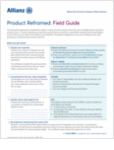The number of years of defined contribution plan eligibility has a significant impact on Gen X workers’ risk of running out of income in retirement, a report from the Employee Benefits Research Institute found.
 EBRI simulated outcomes in its Retirement Security Projection Model to determine how many investors were at risk of running out of retirement income, as well as how severe their shortfall could be. The model considers three different levels of “adequate income,” or the accumulated value of deficits generated after all members of the household have died, divided by the accumulated value of the total retirement expenditures for the household.
EBRI simulated outcomes in its Retirement Security Projection Model to determine how many investors were at risk of running out of retirement income, as well as how severe their shortfall could be. The model considers three different levels of “adequate income,” or the accumulated value of deficits generated after all members of the household have died, divided by the accumulated value of the total retirement expenditures for the household.
Almost 44% of Gen X households are at risk of running out of income in retirement, the report, released in June, found.
That figure is based on the assumption that individuals retire at age 65 and that they’ll fail to accumulate 100% of adequate income. A little over one-third of households are at risk of having less than 90% of the resources they need, and 19% are at risk of having less than 80%.
When taking Gen X households’ future earning and saving years into consideration, the report found more than 60% of households without future 401(k) eligibility were at risk of running out of retirement income. For those with another 20 years of eligibility, just 18% were at risk.








 June 15, 2012 at 08:35 AM
June 15, 2012 at 08:35 AM










